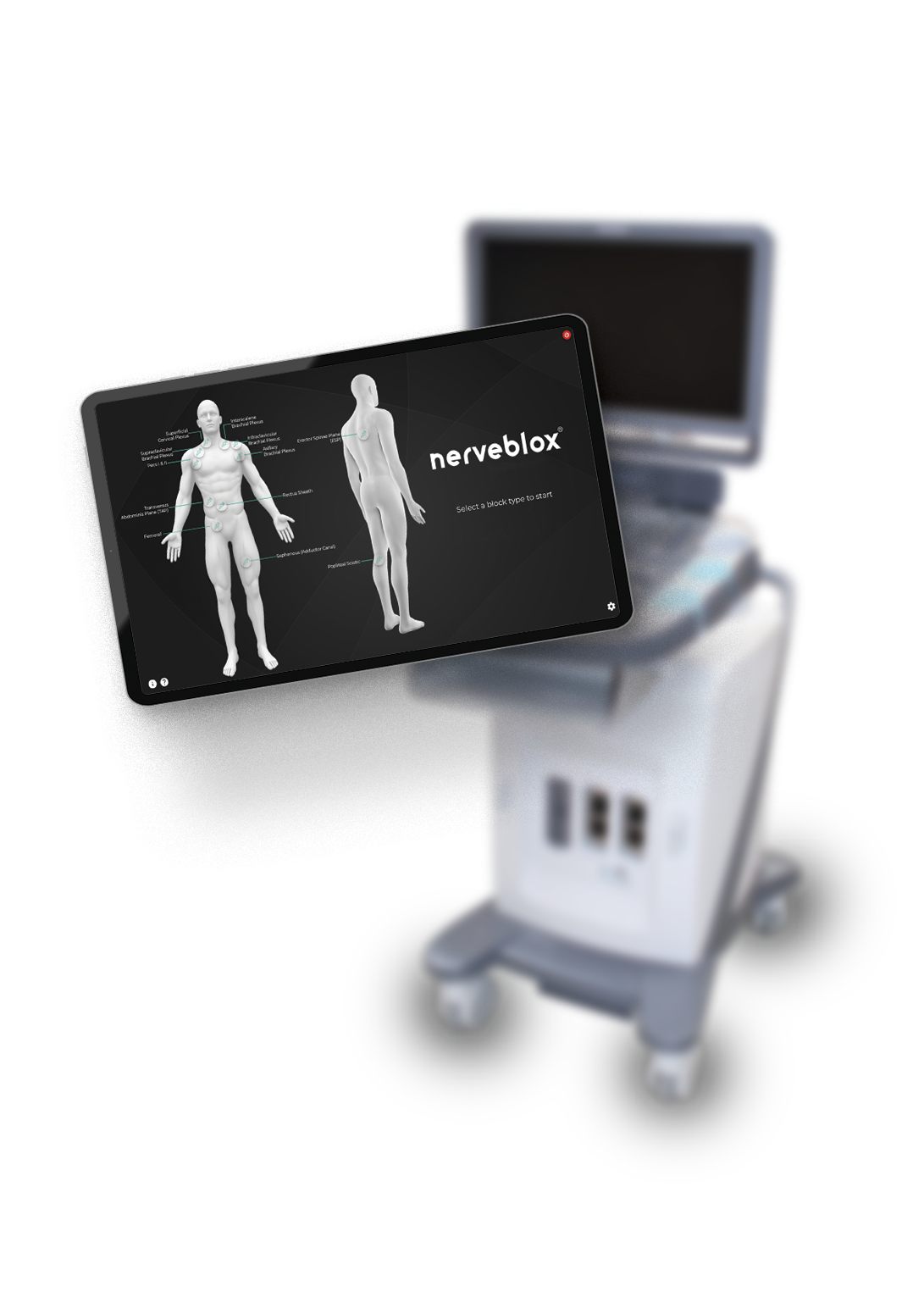
It’s perfect time to use AI in healthcare.
AI systems are able to learn incomparably faster than human beings. This allows us to develop artificial experts tutored in numerous institutes in a short time.
Everyday, more and more anesthesiologists are choosing ultrasound imaging for administering regional anesthesia. Ultrasound provides clear advantages which make peripheral nerve block anesthesia application increasingly efficient and effective.
Ultrasound imaging’s key advantages over other imaging modalities are its portability compared to technologies like magnetic resonance imaging and computed tomography along with the absence of ionizing radiation risks. Ultrasound guidance allows for instantaneous viewing of the nerves, the needle-tip to maximize block success surrounding intravenous structures and helps minimize complications.
Another advantage of ultrasound guided peripheral nerve blocks (PNB) is the ability to utilize of Nerveblox, the artificial intelligence anatomy identification and visualization software.
Research conducted on ultrasound-guided peripheral nerve blocks found that there was no need for nerve stimulation once peripheral nerves were properly imaged by ultrasound. No additional benefits were gained from nerve stimulation because of the efficacy of ultrasound imaging. The study also found that the peripheral nerve block anesthesia onset time or the time it took for the analgesic effect to start working was reduced. Also, the duration of the peripheral nerve block analgesia effect was similarly reduced, especially in adults along with the number of needle passes required. Here, you can utilize our solution to improve further. Namely, the use of artificial intelligence or deep learning for regional anesthesia, Nerveblox. It provides confident about ultrasonography interpretation. Improvements in precision based on the ultrasound imaging technology meant anesthesiologist can decrease the dosages while achieving these key improvements. The study further observed reductions in the regularity of accidental vascular punctures. It is interesting to note that is the study, paranesthesia during block performance was seen to have decreased.
Ultrasound imaging has helped to make the world of peripheral nerve blocking much easier as pointed out by the study, which concluded that ultrasound guidance shortens the block onset time and number of needle passes while also shortening the block performance time. It also showed that lower local anesthetic doses could be used to achieve peripheral nerve blocks, saving time and money for clients and practitioners.
KOSCIELNIAK-NIELSEN, Z. J. (2008). Ultrasound-guided peripheral nerve blocks: What are the benefits? Acta Anaesthesiologica Scandinavica, 52(6), 727–737. https://doi.org/10.1111/j.1399-6576.2008.01666.x
UpToDate. (2021). Uptodate.com. https://www.uptodate.com/contents/ultrasound-for-peripheral-nerve-blocks#:~:text=Ultrasound%20imaging%20is%20increasingly%20used,block%20success%20and%20minimize%20complications.

AI systems are able to learn incomparably faster than human beings. This allows us to develop artificial experts tutored in numerous institutes in a short time.
Nerveblox is a CE marked medical device which indicates that it meets EU safety, health and environmental protection requirements.It is not available for sale in United States and this content does not constitute a clinical benefit nor a commercial offer.